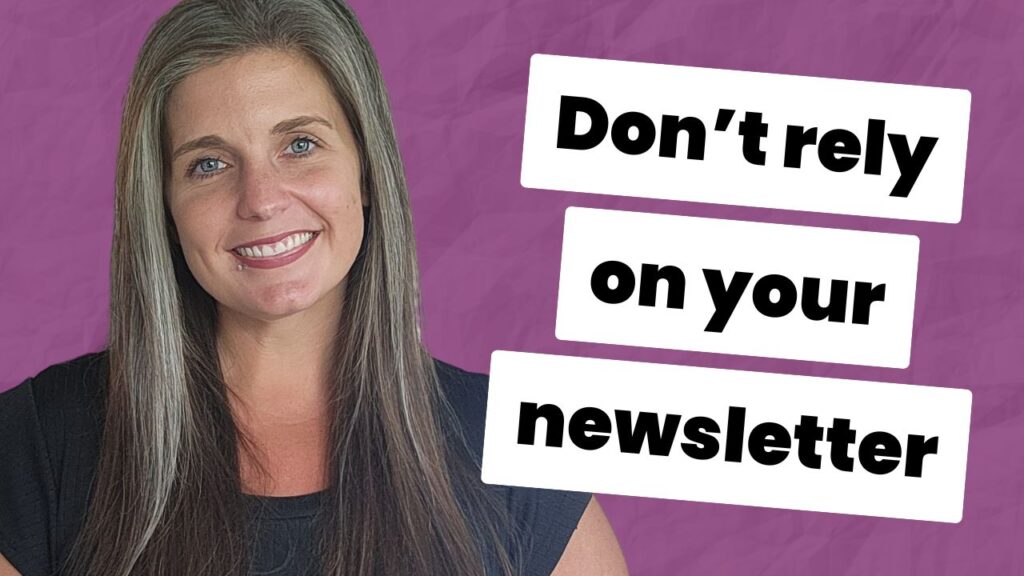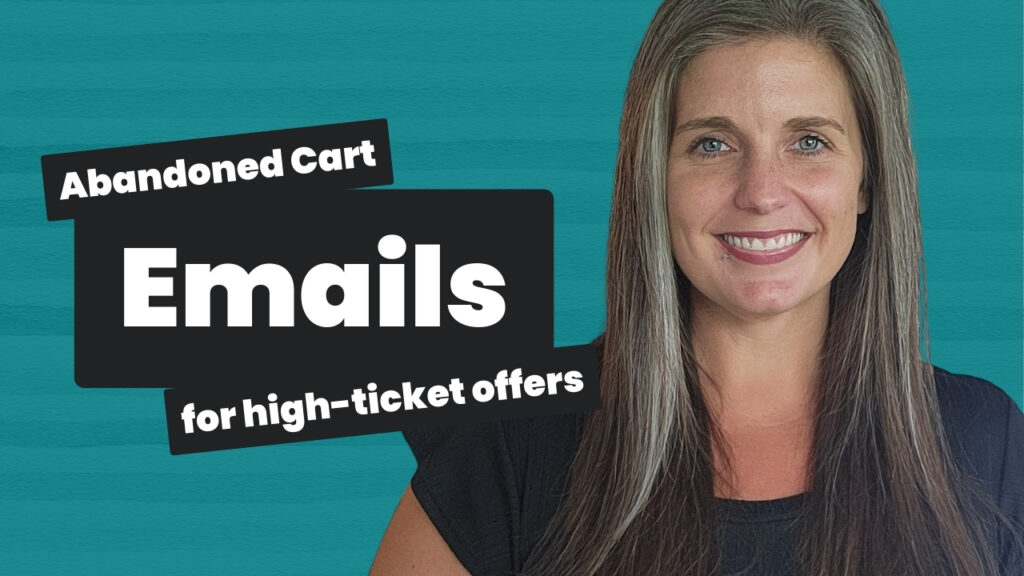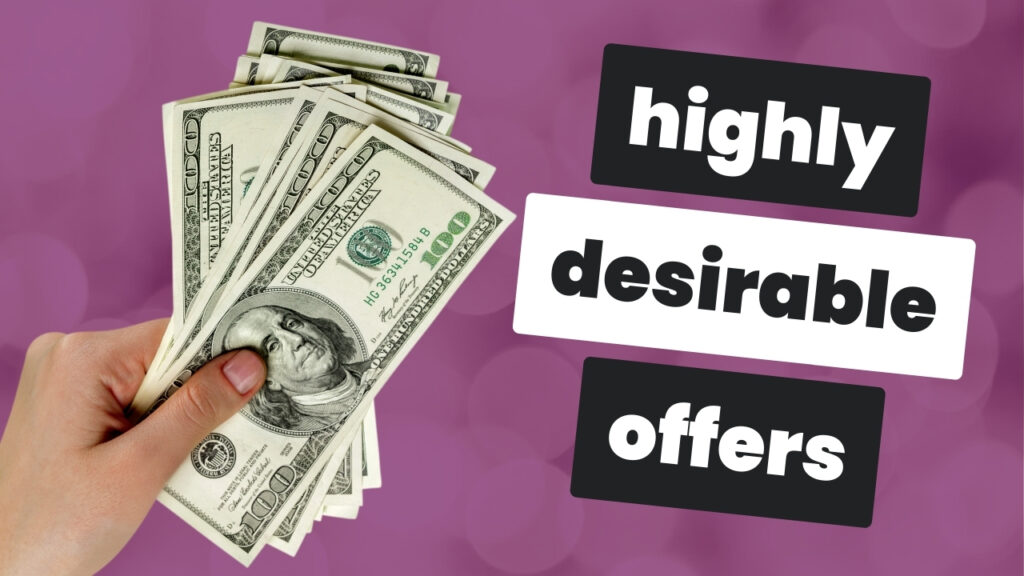Tired of sitting through time-wasting sales calls with poor-fit leads? Try these 3 strategies to bring in higher-quality prospects. So you can start having more productive sales calls and closable conversations.
TRANSCRIPT:
Here are 3 ways you can improve your lead quality so that you can start having more productive sales conversations. This will be especially relevant for you if you sell high-ticket coaching, consulting, and services.
Hi, I’m Paige. I’m a conversion copywriter, and today I’m going to share with you 3 strategies I use with my clients to bring in better quality leads.
Strategy #1: is to get clear on who your ideal buyer is.
Nine times out of 10, the root cause of lead quality problems is a lack of clarity on the ideal buyer profile. And if you don’t really understand your ideal buyer and the characteristics that make up that profile, then it’s going to be very challenging to put out campaigns and write messaging that attracts people who are a good fit to that profile.
By far, the best way to get ultra-specific on who your ideal buyer is is to host customer discovery interviews. I like to interview 7 to 10 people who my clients consider their ideal buyers, so I can map their conversion context and look for trends in who really makes the best quality lead.
Questions you want to ask yourself for identifying your ideal buyers are:
- Who was a pleasure to work with?
- Who easily converted?
- And who had little to no pricing objections?
In a recent project, I was working with a client to optimize for lead quality, and when I was in the data analysis process, I was able to group the majority of the leads into 2 major groups. And that was because they had different motivators. Group A had motivator A, and Group B had motivator B.
What was interesting was:
Group A actually turned out to be better quality leads because the motivator, the thing that they wanted, was actually a really good fit for the product. However the people in Group B ended up having more objections, more concerns. They didn’t convert as easily, and they didn’t convert as quickly. And it was rooted in the fact that the motivator that they had wasn’t as good of a fit for the product as the people in Group A.
So we made the data-inspired decision to focus the messaging on people in Group A who had this specific motivator because we knew, based on the data, that these people turned out to be higher-quality leads.
Strategy #2 is to optimize your campaign for the stages of awareness.
Just to refresh, the stages of awareness are…
- unaware,
- problem (and goal) aware,
- solution aware,
- product aware, and
- most aware.
The problem I see in campaigns that have lead quality issues, but we know decent quality leads are coming in the door, or at least the leads have the potential to be good quality leads on the back end, is that the campaign is not optimized for the stages of awareness.
So, for example, the front end of the campaign, at the traffic or lead magnet stage, is targeting people in problem awareness. Then they’re asking them to book a call to talk about a product.
And so what clients find when they set up their campaign this way and they’re asking people in product awareness to be ready for a sales call, is that those sales calls are basically time wasted because the lead isn’t ready to have a sales conversation.
Make sure that you’re giving your lead the information they need to be ready for a sales conversation.
In a recent project, this was a big part of the work that we did to optimize the campaign. When my client first came to me, he was having a lot of challenging sales conversations with people who just weren’t ready to talk about the product he was selling.
When I dug deeper into the funnel that he was using to generate those leads, I discovered why.
Because there was a lack of information, a lack of getting a lead ready to have a sales conversation.
So remember to look at your campaign through the lens of the stages of awareness and make sure you’re doing enough educating, or what I like to call consultative copy, in order to get leads from wherever they are when they first come into contact with you, to get them to where they need to be in order to have a productive sales conversation.
You can’t skip stages of awareness and expect to have quality sales conversations.
You have to lead people through the journey so that they’re ready for that conversation.
And that’s one of the big reasons the webinar-style funnel and the VSL-style funnels are so popular (note: and effective!) because those formats allow you to take a prospect through the stages of awareness rather quickly, in the span of anywhere from 30 minutes to 90 minutes, depending on how much education is required.
Strategy #3 is to optimize your traffic source and your lead magnet.
Higher lead quality really starts at the top of the funnel with your ad and your lead magnet.
So on the ad side, it has to do a lot with interest targeting. So if your interest targeting is out of whack or it’s missing altogether, that can have serious implications for how well your funnel performs and the quality of leads that you actually attract into that campaign.
On the lead magnet side, it has to do with the topic of the lead magnet and how the lead magnet is messaged.
If you’re not clear on who your ideal buyer is, your lead magnet might not solve a problem that your ideal buyer cares about. So this can be especially relevant if your business has evolved over time, your ideal buyer has changed over the years, and you haven’t gone back to look and evaluate whether or not those lead magnets are still relevant.
Like, for example, how to write your first sales page, right?
You wouldn’t expect to attract a more sophisticated business owner with that lead magnet. You would likely attract a brand-new business owner who was just getting started in their marketing efforts.
So that’s one of the problems I see most often, is that the lead magnet, though the topic (e.g. sales pages) might be relevant, the problem (e.g. how to write your first sales page) isn’t relevant for the level or the stage of sophistication of the buyer.
Once you have a clear idea of who your ideal buyer is and you know what their specific problems and goals are, then you can go look at your lead magnets and make sure that they align with those topics.
So there you have it.
There are 3 strategies I use with my clients that you can use to improve your lead quality.
If you’re struggling with lead quality issues and you’d like help optimizing your campaigns for higher-quality leads, we should chat. Click here to start a project conversation with me.


